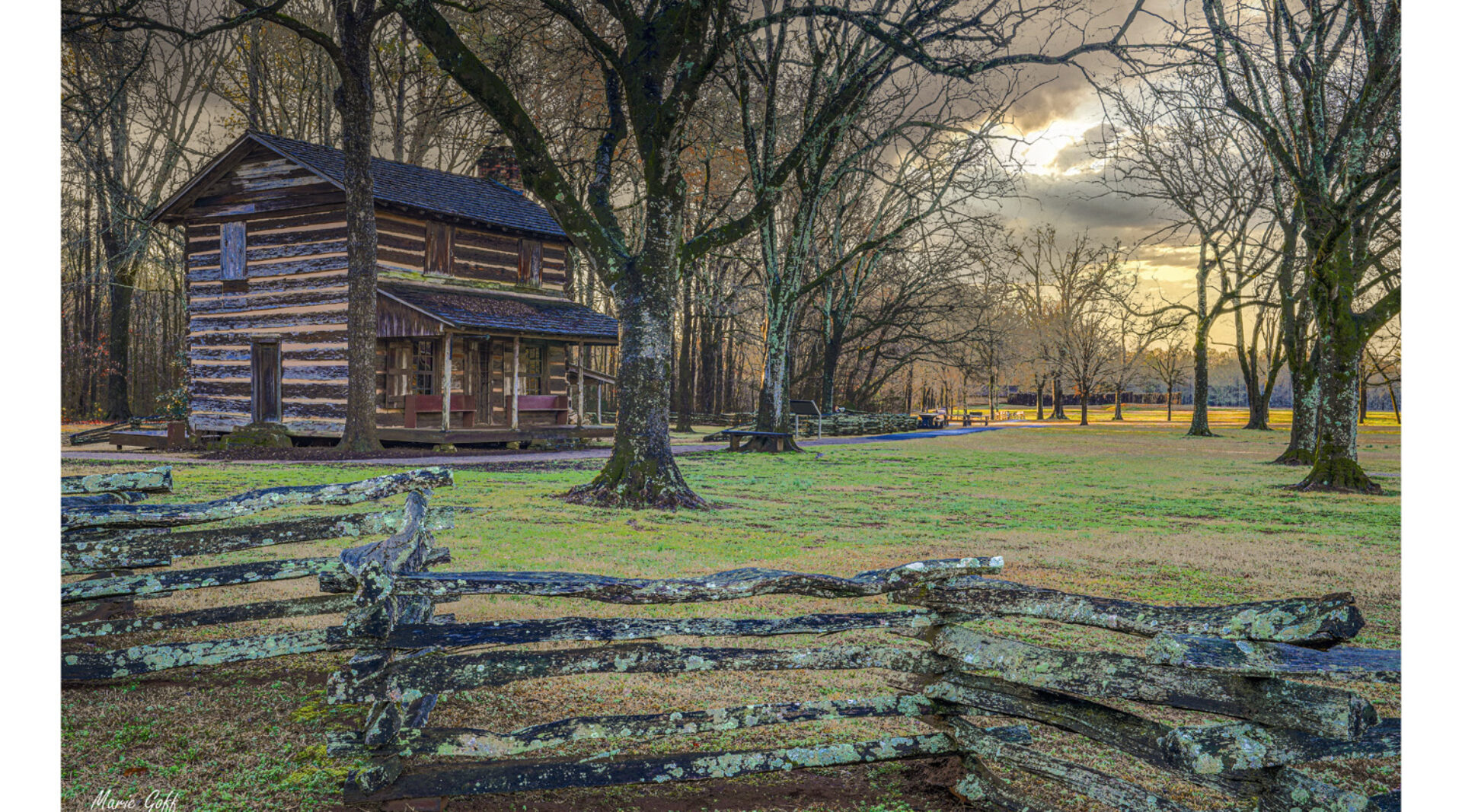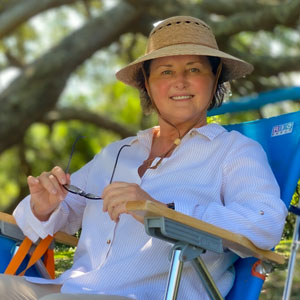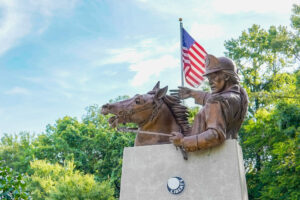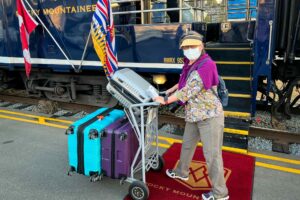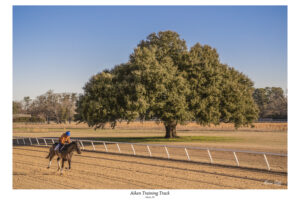Flashback to the American Revolution – Ninety Six, South Carolina
My flashback to the American Revolution occurred on Jan 23, 2023, at 08:59:06 hours. A locked entrance gate secured the Ninety Six Historic Site, and I stood there alone in the predawn hours, setting up my tripod. I could see the Logan Log House and the snake-rail fence in front. Overhead, the sky was overcast, with dark, heavy clouds. The foreboding sky suited my purposes perfectly! I wanted to capture this small part of the scene as Patriot General Nathanael Green first saw it in 1781.
“At his first sight of Star Fort, dark, sullen, and forbidding, Nathanael Green became as excited as his troops. Accompanied by Colonel Kosciusko (Chief Engineer), Major Pendleton, and an escort of dragoons, he set out in the late afternoon to ride around Ninety Six. Even though a thunderstorm broke over the reconnoitering party, Green continued his inspection.” ~ Ninety Six The Struggle for the South Carolina Backcountry by Robert D. Bass
Reflecting on my history lessons, I realize the significance of my hometown’s involvement in the American Revolution. Resident and historian Bruce Ezell formed the Star Fort Historic Commission in the 1970s while I was in high school. Congress designated the Ninety Six National Historic Site through archaeological digs and the discovery of historical artifacts. We’d always called it Star Fort, and in those days, hearing rumors of people finding cannonballs, we’d ride there to look around. Later students from archeological field schools found them at the site.
Flashback to the American Revolution
Ninety Six’s name carries a fascinating history. Did it originate from its distance of ninety-six miles from the Cherokee Indian town of Keowee? Or did the beautiful and courageous Creek Indian woman, Issaqueena, inspire the name? She rode ninety-six miles on horseback to warn her beloved trader of an impending attack by the Cherokees. This remarkable tale originates from J.W. Daniels’ 1898 epic poem, “Cateechee of Keowee,” commemorated at the magnificent Issaqueena Falls.

During the Revolutionary War, Ninety Six was strategically important for its location at a crossroads along an important trade route. Both white settlers and the Indians used it and traded there. The community had a courthouse, jail, and several houses. Still, there were differing loyalties between those who supported the King and those who were Patriots, including members of the Cherokee Indians. Both Loyalists and Patriots tried to secure the backing of the Indians. Many Cherokees resented the Patriots for a history of encroachment on their land and aligned with the British.
“The first land battle south of New England was fought here [Ninety-Six] in 1775.” ~ National Park Foundation, Ninety Six National Historic Site.
The first land battle of the Revolutionary War in the South resulted in thirty wounded and five killed. More bloodshed would follow.
By 1780, the Patriots at Ninety Six were still struggling against the British and Loyalists. By then, the British had occupied their capital, Charlestown. The General Assembly of South Carolina had fled, and the judiciary disbanded. The backcountry of South Carolina was still free of British control, and British Lt. Gen. Lord Cornwallis set his sights on Ninety Six. He wrote to British Brig. Gen. James Patterson in Charlestown,
“Something will probably be necessary for the greatest part of the summer at Ninety Six, which is a kind of headquarters of the Back Country.” ~ Ninety Six Struggle for the South Carolina Back Country, Robert D. Bass
At Ninety Six, the Patriots surrendered the town to the Loyalists in June 1780. From that point, Lt. Col. John Cruger took command at Ninety Six and began to secure the town by building the eight-point fortification shaped like a star.
The Logan Log House is an 18th-century home at Star Fort’s site, the oldest in Greenwood County. The cabin moved to the site in 1971 and is part of the park’s living history program as Black Swan Tavern. The Ninety Six National Historic Site offers four walking trails and a 27-acre Star Fort Pond lake and nature trail. The paved path around the Revolutionary battlefield narrates the fort’s 28-day siege. The Visitors Center is staffed with Park Rangers to answer questions, a museum, a film, and a gift shop.

In 1781, Greene determined to liberate the fort as part of his larger plan to liberate the South from British occupation. He led a 28-day siege on the fort, with his chief engineer, Col. Thaddeus Kosciuszko, digging siege lines and an underground tunnel in an attempt to attack the fort. Scientists mapped the mine tunnel extensively in 2004, using special laser scanning. But Lt. Col. Cruger had constructed a challenging fortification, and every attempt at Kosciuszko’s plan failed. Lt. Col. Henry Lee, also known as “Lighthorse Harry,” arrived in Ninety Six with Lee’s Legion as the siege continued.
Lee did not agree with the plan to attack the fort using siege lines. After Lee attacked and captured the stockade, he wanted to attack the town, but Greene disagreed. When Greene learned that 2000 British troops were coming, he abandoned the siege and pulled away from the town. Later, Lee blamed Kosciuszko for the failure at Ninety Six, although Kosciuszko was considered a brilliant engineer.
References
Ninety Six The Struggle for the South Carolina Back Country, Robert D. Bass
The South Carolina Encyclopedia Guide to the American Revolution in South Carolina, by Walter Edgar
The Ninety Six Historic Site National Park
The Cherokees’ and Catawbas’ Stance in the Revolutionary War by Jim L. Summer
Carolina Oddessy Exploring North and South Carolina
Artillery Ammunition from the 1781 Siege of Star Fort, James B. Legg
Journey Through South Carolina; a photographer’s Love of the State
Travel Notes
Recently, I had the pleasure of speaking at the Ninety Six Historical Society on June 25th. Jennifer Donlon kindly invited me to share my experience journeying across South Carolina. Out of the thirty-six prints I had on display at the South Carolina State Library, I selected fourteen to showcase during my speech. Amongst these prints, two stood out as they had a direct connection to my story – the Logan Log House and Issaqueena Falls. At the conclusion, I presented the Logan Log House print to Mayor Michael Rowe, gifted a Challenge Coin to Veteran Andy Dywan, caught up with friends and family, and took some snapshots around the lovely Visitors Center.
Growing up in Ninety Six was a cherished experience for me. It was where I attended the last part of elementary school and high school and became the town’s first female police officer. However, what made it truly special were the close friendships I formed there, which continue to thrive today.






